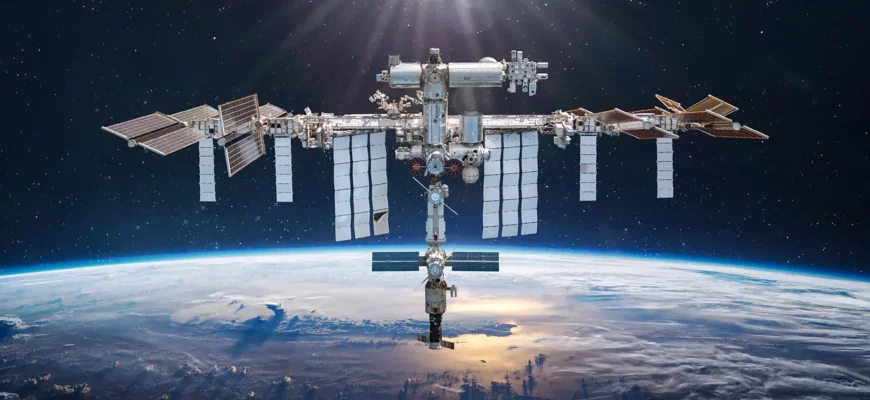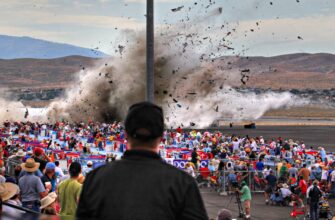As the venerable International Space Station (ISS) slowly but surely approaches its twilight years, the global space community is abuzz with preparations for what comes next. For Russia, this future is coalescing around the prospective Russian Orbital Station (ROS), a new cornerstone for its independent crewed space program. Yet, before the first module can soar, a critical decision looms: what orbit will this new celestial home call its own?
Sergey Krikalev, a cosmonaut of considerable renown, currently serving as Deputy Director General of Roscosmos and Special Representative of the President of the Russian Federation for International Cooperation in Space, recently shed light on this very conundrum. Speaking to RIA Novosti, Krikalev confirmed that discussions are intensely underway within Roscosmos regarding the most effective deployment parameters for the ROS. “We are currently debating various options for the most effective way to deploy the station,” Krikalev stated, adding, with the measured cadence of someone weighing immense variables, “No decisions have been made yet.”
The Weight of a World – Or Rather, an Orbit
Choosing an orbit for a space station is far from a trivial matter. It`s a decision that dictates everything from the scientific research conducted to the logistical complexity of resupply missions, and even the safety of its inhabitants. Imagine building a house, but instead of picking a neighborhood, you`re deciding on a fundamental law of physics that governs its very existence. The stakes, to put it mildly, are astronomically high.
The ISS, for instance, resides in a Low Earth Orbit (LEO) with an inclination of 51.6 degrees. This particular orbit allows it to pass over approximately 90% of the Earth`s population, making it accessible for launches from both the U.S. (Florida) and Russia (Baikonur). It`s a well-trodden path, but perhaps not the only path, or even the optimal one, for Russia`s next-generation platform.
What are the Orbital Contenders and Why Do They Matter?
While Krikalev did not specify the exact alternatives being considered, the primary factors influencing such a decision typically include:
- Altitude: A higher orbit means less atmospheric drag, saving fuel for orbital maintenance. However, it also requires more powerful rockets for launch and rendezvous, increasing costs and complexity. The ISS, for example, needs regular reboosts to combat drag.
- Inclination: This refers to the angle of the orbit relative to the Earth`s equator. A high inclination (like the ISS`s 51.6 degrees) allows observation and access to a wider range of latitudes, including much of Russia`s territory. A lower inclination could offer easier launch windows and potentially more efficient ground tracking, but with reduced global coverage. A polar orbit (90-degree inclination) offers full global coverage, ideal for Earth observation, but often less convenient for human presence due to communication gaps.
- Scientific Objectives: Is the station primarily for Earth observation, materials science, deep space preparation, or perhaps even a stepping stone for lunar missions? Each objective may favor a different orbital regime.
- Operational Independence: As Russia plans its own station after years of international cooperation on the ISS, it might prioritize orbits that are optimally serviced from its own launch facilities (e.g., Vostochny Cosmodrome), without relying on foreign infrastructure or ground stations.
- Space Debris: LEO is becoming increasingly crowded. Higher orbits might offer a slightly less congested environment, though debris is a concern at all operational altitudes.
“The universe, as one might cynically observe, has a peculiar way of making even the most groundbreaking human endeavors subject to the laws of celestial bureaucracy. Every kilometer, every degree of inclination, must be justified.”
A New Chapter for Russian Space Exploration
The development of the Russian Orbital Station is not merely a replacement for the country`s segment of the ISS; it represents a strategic pivot towards renewed independence in crewed spaceflight. The first module of ROS is ambitiously slated for launch in December 2027, with five additional modules, including two specialized target modules, expected to join it by 2032.
This timeline underscores the urgency. The ISS, a marvel of international cooperation since its construction began in 1998, was initially designed for a 15-year operational lifespan. This was subsequently extended to 2020, then 2024. While Russia has committed to operating its segment until 2028, and other partner nations until 2030, the writing is on the wall. A successor is not just desired but necessary to maintain continuous human presence in low-Earth orbit under Russian flag.
Looking Ahead: The Future of Orbiting Habitats
The choice of orbit for the ROS will be a definitive declaration of Russia`s future priorities in space. Will it be a high-inclination workhorse mirroring the ISS, or will it venture into a novel orbital pathway, perhaps offering unique vantage points or stepping stone capabilities for future lunar and Martian endeavors? The technical feasibility, the scientific return, and the geopolitical implications all play a role in this grand calculation.
As Roscosmos meticulously deliberates, the global space community watches, anticipating the final parameters that will define the next chapter of human enterprise above Earth. The decision isn`t just about a point in space; it`s about charting a course for an entire nation`s cosmic ambitions.








